Massage for Scoliosis
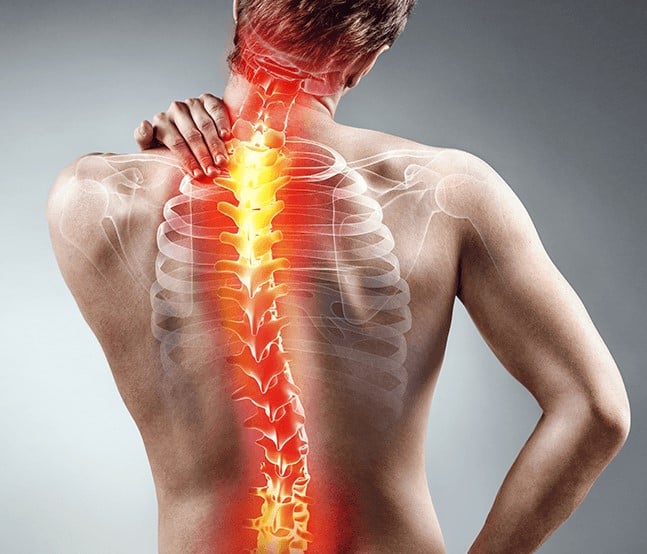
The spine has a natural S-shaped curve which enables flexibility, balancing, lifting and standing, but in those with scoliosis an abnormal sideways curvature of the spine occurs, causing pain, fatigue and breathing problems. Adolescent idiopathic scoliosis, affecting 10 in every 200 children over 10 years old is the most common form, but it may be congenital, affecting infants, or degenerative, affecting older adults.
Scoliosis is often overlooked, due to its asymptomatic nature, but if it has been identified, massage therapy can be an effective way of slowing progression without surgery or having to wear braces. For those with scoliosis, standing up straight isn’t simply a case of retracting the shoulders, contracting the abdominals, bringing the head back, and lifting the torso out of the pelvis, as the hips and rib cage may be asymmetrical.
CLASSIFICATION OF SPINAL CURVES
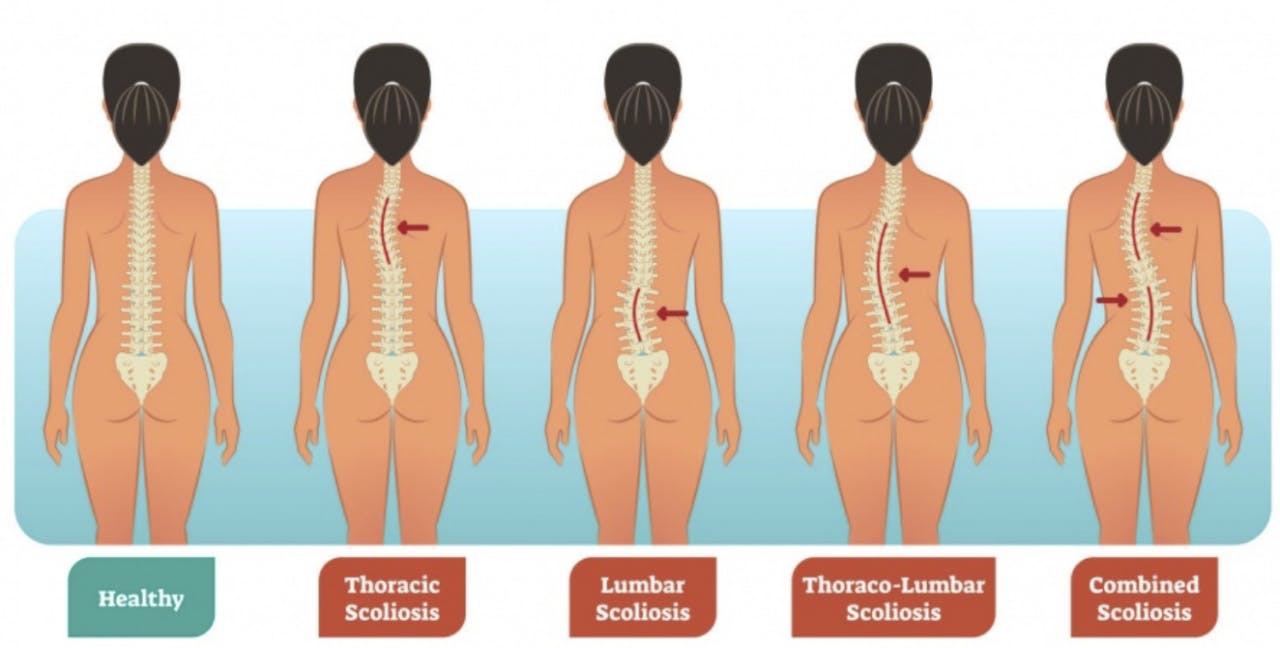
Scoliosis is characterised by four degrees of severity:-
• Optimal spine — no scoliotic dysfunction
• Mild scoliosis — demonstrates a thoracic curve of 5 degrees to 15 degrees • Moderate scoliosis — denoted by 20 to 45 degrees of curvature
• Severe scoliosis — represents curvature of 50 degrees or more
Scoliosis can be classified by:-
• its reversibility
• severity
• aetiology
• type and location
For therapists the type of scoliosis is more important, ie:-
• FUNCTIONAL SCOLIOSIS – (SECONDARY SCOLIOSIS)
- spinal curves improve with forward-bending, side bending and specific rotational movements
- characterized by an asymmetric position of the trunk and back
- may become fixed if left untreated due to muscle guarding where the brain will compensate for asymmetry by adapting length-tension balance in the tissues. If these postural compensations continue, adjacent tissues will weaken and symptoms will become apparent.
- Functional scoliosis is a physiologic posture that arises from weight bearing one leg while standing. It becomes pathological if it becomes habitual. The natural presence of defects in muscles, ligaments, body alignment, nutrition, or structure of the bones, will determine how people naturally sit or stand
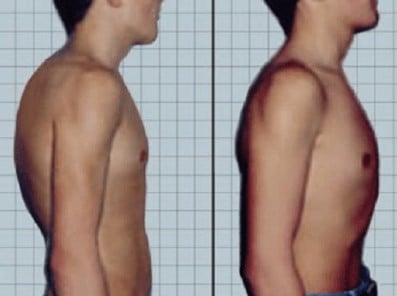
• STRUCTURAL/FIXED SCOLIOSIS – (PRIMARY SCOLIOSIS)
- spinal curve does not straighten during bending or rotational movements
- often accompanied by functional changes in the thoracic and abdominal organs
- often involves psychological and emotional disturbances
- the amount of functional change in the heart, lungs, and other viscera is directly proportionate to the level of physical deformity
- symptoms such as backaches, head/neck pain, arthritic symptoms, chest pain, and organ dysfunction are what lead people to seek help
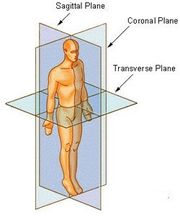
Spinal curvature occurs across different planes of the body
• SAGITTAL PLANE - hyperkyphosis and hyperlordosis
• TRANSVERSE PLANE - compensations often referred to as rotations or torsions.
• CORONAL PLANE - scoliotic (side-to-side) curves are usually thought of as coronal plane deviations, but tend to occur alongside sagittal deviations eg. scoliokyphosis, where the ribcage hump becomes more prominent while forward bending
ROTOSCOLIOSIS
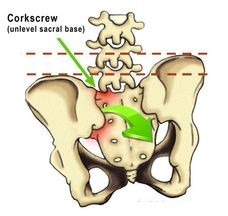
• the base of the spine “corkscrews” headward as the vertebral column turns on its axis
• coronal deviations often result from leg length discrepancy or pelvic imbalances
CAUSES
• curvature in females are 3 - 5 times more likely to progress into more pronounced postural issues
• genetic links
• 70 - 90 % of scoliosis is idiopathic, ie. no known cause
• many idiopathic fixed scoliotic deformities are found to be compensations due to sacral or cranial issues
• research has shown a clear link between scoliosis and lowered bone density due to:-
- genetics
- oestrogen levels
- nutrition
- exercise
- drugs
Causes of functional scoliosis:-
Refers to a structurally normal spine that appears curved, potentially a temporary abnormality, caused by:-
• leg length discrepancy
• spasmodic muscles
• inflammatory conditions eg. appendicitis
• often accompanied by other signs of poor posture, eg. rounded shoulders, prominent abdomen, flat feet , forward head posture, spinal asymmetry
COMMON FUNCTIONAL PATTERNS
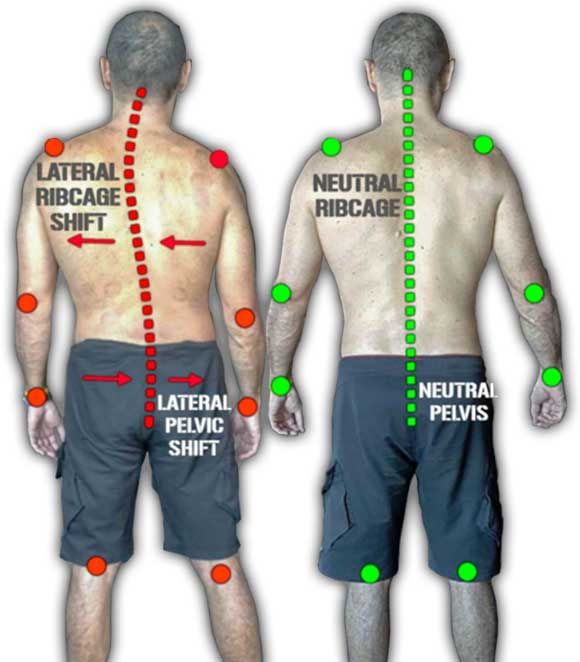
Clients with functional scoliosis will usually present with a predictable postural pattern where the following asymmetries are noted (see diagram):-
• Left foot pronated, right foot supinated - the right arch supinates to try to level the ilia, but the pelvic bowl side-shifts over the left femur and up-slipped left ilium
• Up-slipped left innominate (posterior/superior)
• Cephalad left pubic symphysis
• symptomatic scoliosis
• Left on left sacral torsion
• Lumbar spine side bent left/rotated right
• Compensatory thoracic scoliosis convex left - In a forward-bend, the left upper back may be more posterior than the right, while at the thoracolumbar junction, the right side is more prominent than the left. Usually, the vertebrae in the curve tend to side bend in one direction and rotate oppositely
• Low left shoulder
• Torsioned shoulder girdle (right forward and left back)
• Compensatory left rotation of atlas on axis
• Left side bending of occiput on atlas
TYPE 1 GROUP CURVE
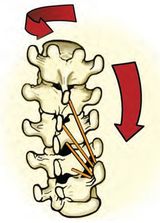
This is a functional scoliotic pattern where 3 or more consecutive vertebrae side bend to one side, rotating in the opposite direction.
SHORT LEG SYNDROME
Asymmetry may exist in functional scoliosis without leg-length discrepancy, but leg-length discrepancy rarely occurs without structural asymmetry. Short leg may be caused by psoas imbalance or hyperpronation. Younger clients often have a long C-shaped lateral curvature with convexity toward the short-leg side.

Balancing the iliosacral joints will correct the short leg, allowing the spine to develop straight and prevent more severe curvature and secondary musculoskeletal changes from developing later in life.
Convexity opposite the short-leg, indicates non-neutral dysfunctions in the lower lumbar vertebrae and lumbosacral junction.
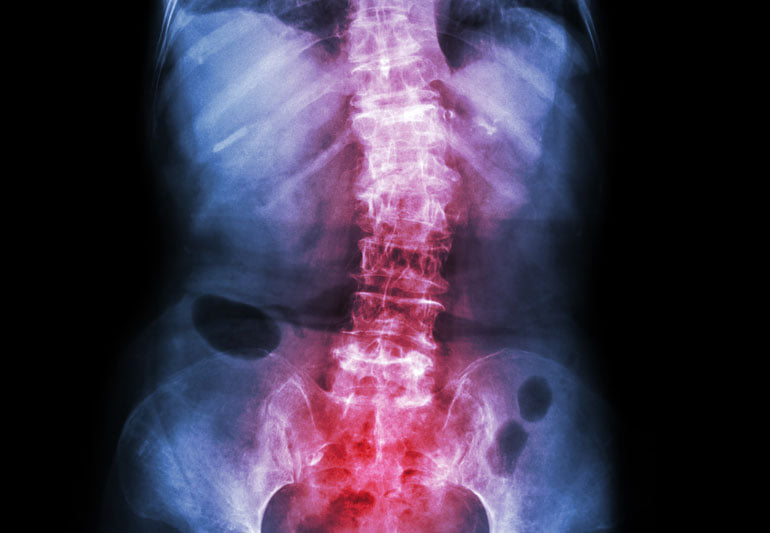
Understanding basic joint biomechanics is essential when assessing and treating scoliotic clients, being able to identify joint coupling that causes abnormal patterns so that balance and symmetry to the spine and soft tissues can be restored. Eg. in right thoracic scoliosis, the vertebrae at the apex of the curve are side bending left and rotating right causing a convex hump at the ribs. Many therapists, when they identify a posterior bulge between the spinal column and scapula in cases of thoracic scoliosis, will manipulate the overstretched paravertebral fascia covering the bony ribs, believing they are releasing fibrotic muscles, but this can worsen the scoliosis. In fact, there are many stages within a scoliosis treatment, including:-
• stretch the weakened erectors
• depressing the scapula, lengthening latissimus dorsi, releasing the diaphragm and obliques and stretching the inferior transabdominal fascial column to flatten the ribcage
• Lengthen lats and stretch scoliotic concavity
• Release the diaphragm, obliques, and transabdominal column
• Lower transabdominal column release
THERAPEUTIC PRINCIPLES OF TREATMENT
• Reducing gravitational exposure
• using traction as a basic corrective force
• applying pressure over the convexity of the curve
• creating myofascial extensibility to the concavity
More research into scoliosis is needed to really explain the dysfunctional mechanics of the scoliosis. The search for more effective therapy continues, postural distortions are being recognized at an earlier age, meaning that earlier manual therapy intervention can treat the scoliosis while mild to moderate, preventing progression. Factors such as environmental toxins, nutrition, and general activity levels, also need to be considered. Current treatment options include bracing, surgery and physical therapy.
MASSAGE FOR SCOLIOSIS
Massage can’t cure scoliosis, but may be able to treat the pain caused by spinal misalignment. Massage therapy is less common in adolescent idiopathic scoliosis, but offers several benefits for people with scoliosis, and often works best when combined with exercises or bracing.
BENEFITS:-
• pain relief
• increased range of motion
• reduced scoliosis curve
• stretches and relaxes the muscles
• increases blood flow to the muscles and tissues
• promotes better sleep
• increase body awareness
If you have had scoliosis surgery, medical advice should be sought prior to treatment.
TYPES OF MASSAGE FOR SCOLIOSIS
• CRANIAL-SACRAL THERAPY- gently stimulates the restricted spinal tissue, improving the functionality of the spine and reducing stiffness and pain
• DEEP TISSUE - combined with stretching and neuromuscular therapy, deep tissue can reduce back pain by increasing the blood flow to the back, helping to lengthen tight muscles
• SWEDISH MASSAGE- a lighter massage to relieve back pain, along with headaches, insomnia and shallow breathing
• SPORTS MASSAGE – a more vigorous massage which can benefit those who have had scoliosis years, by easing muscle restrictions
• SHIATSU - applies pressure to specific points, to stretch/rotate limbs and joints
• MYOFASCIAL RELEASE - opens up stiff areas in the connective tissue that surrounds the muscles
• THAI YOGA MASSAGE - A dynamic bodywork therapy based upon yoga and Ayurveda
